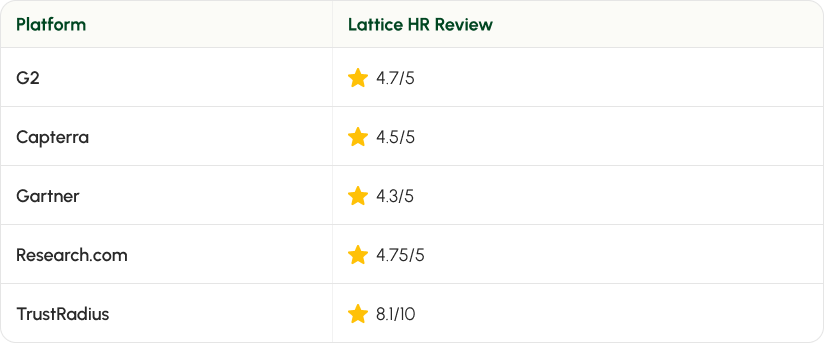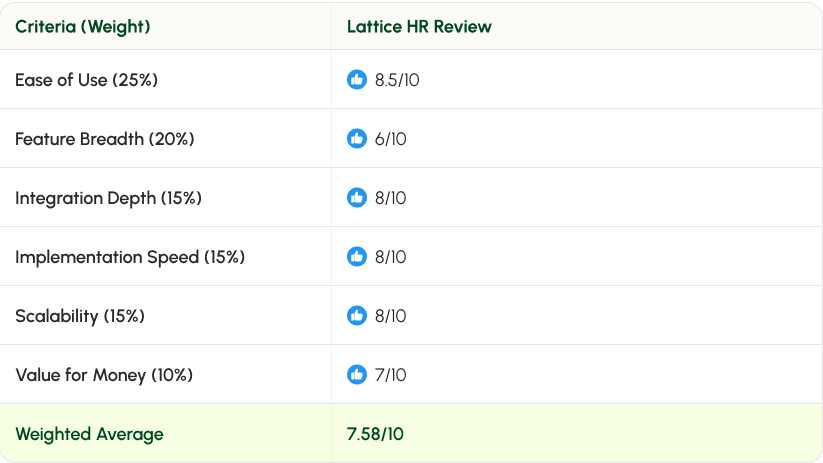Key Lattice Features and Functions
HRIS Management
Lattice's HRIS module functions as the platform's data foundation, centralizing essential employee information and automating basic HR workflows. The system handles secure employee record storage, streamlined onboarding processes, and fundamental administrative tasks that typically consume HR teams' time and energy.
While Lattice markets HRIS capabilities alongside payroll and time tracking features, it's important to understand what this actually means in practice. The platform excels as a talent management system but takes a more foundational approach to traditional HRIS functions. For example, G2 ratings show Lattice scoring 5.7 for time, attendance, and PTO management, notably lower than dedicated HRIS platforms that score above 8.0 in these areas.
Lattice's HRIS strength lies in creating a clean data structure that powers their performance management, goals, and engagement tools. The system effectively manages employee profiles, basic workflow automation, and integration with their talent suite. However, organizations looking for comprehensive benefits administration, robust payroll processing, or advanced time tracking may find gaps in functionality.

Performance Management
Lattice's performance management suite stands as its flagship capability, consistently earning top ratings and customer acclaim. The comprehensive platform delivers everything organizations need for effective performance reviews, talent assessments, continuous feedback, and structured one-on-one meetings, all within a unified, user-friendly interface.
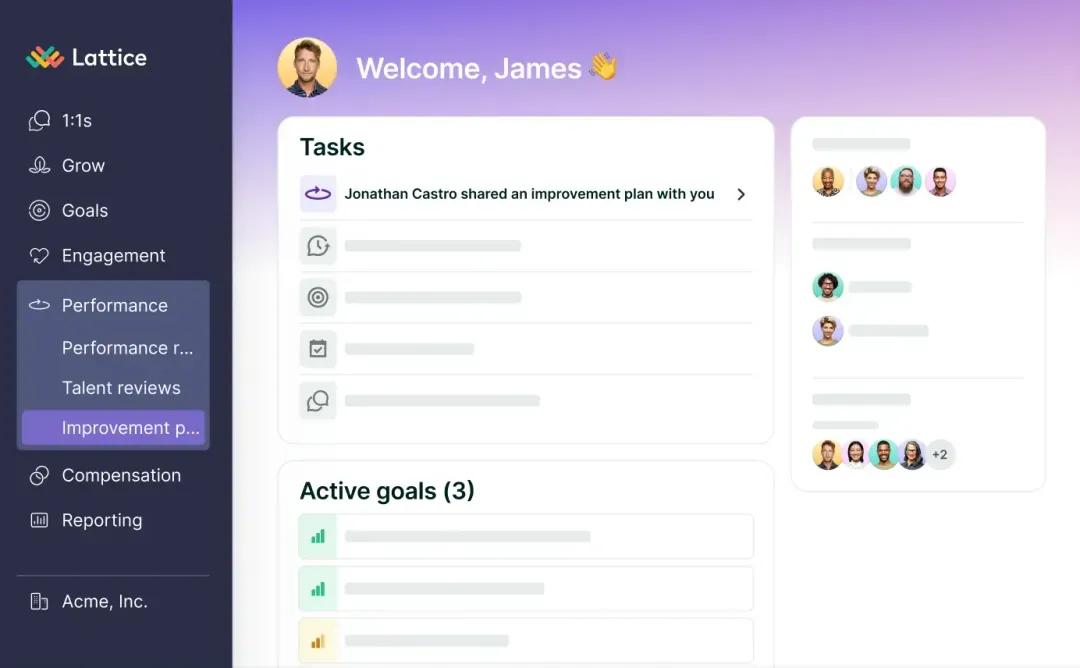
Lattice Performance Function
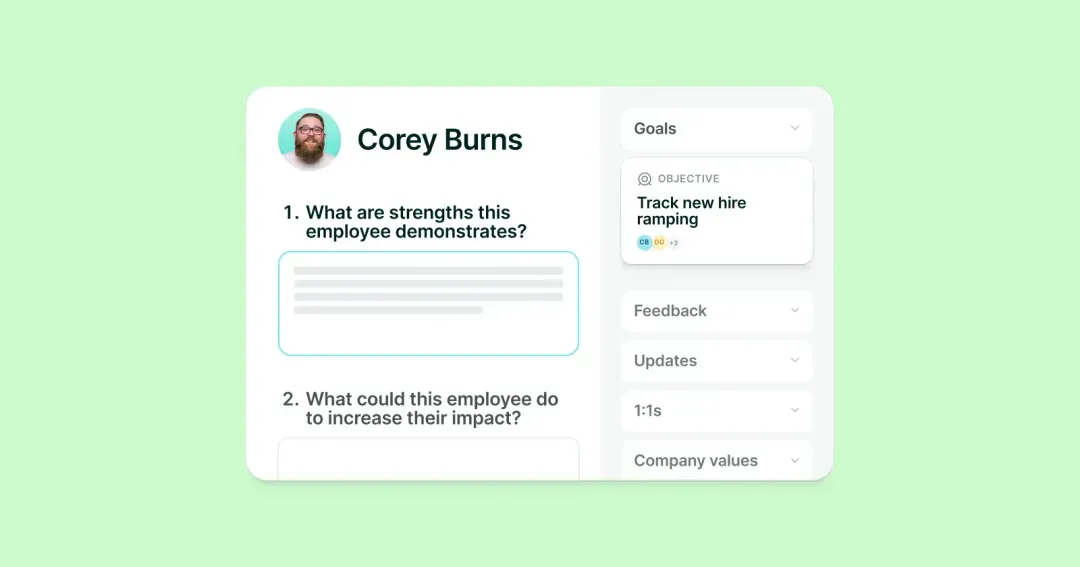
Lattice Performance Reviews Deep Dive
Additional Performance Features
Flexible Review Cycles & Customizable Workflows: What distinguishes Lattice is its exceptional adaptability across different organizational needs. The platform supports annual, quarterly, and project-based review cycles with fully customizable templates and automated workflows. This flexibility empowers HR teams and managers to create performance assessment processes that authentically reflect their company culture and strategic objectives.
Continuous Feedback & Real-Time Communication: Lattice transforms traditional performance management by enabling ongoing dialogue between managers and employees. The real-time feedback system moves organizations beyond outdated annual review cycles, fostering continuous performance conversations. The highly-rated one-on-one meeting tool guides productive discussions while tracking progress against goals and action items.
360-Degree Review Considerations: While Lattice offers comprehensive 360-degree review functionality, some users note administrative complexity in the peer nomination and approval workflow. The multi-step process for selecting feedback providers can be time-intensive for HR administrators. Organizations should evaluate these specific administrative requirements during product demonstrations to ensure alignment with their team's operational capacity and workflow preferences.

Lattice Performance Review Cycle
Goals & OKRs Management
Lattice's Goals & OKRs module creates powerful alignment between employee contributions and company-wide objectives. The platform supports goal creation and progress tracking across individual, team, and organizational levels, ensuring every employee understands how their daily work drives broader business results and organizational success.
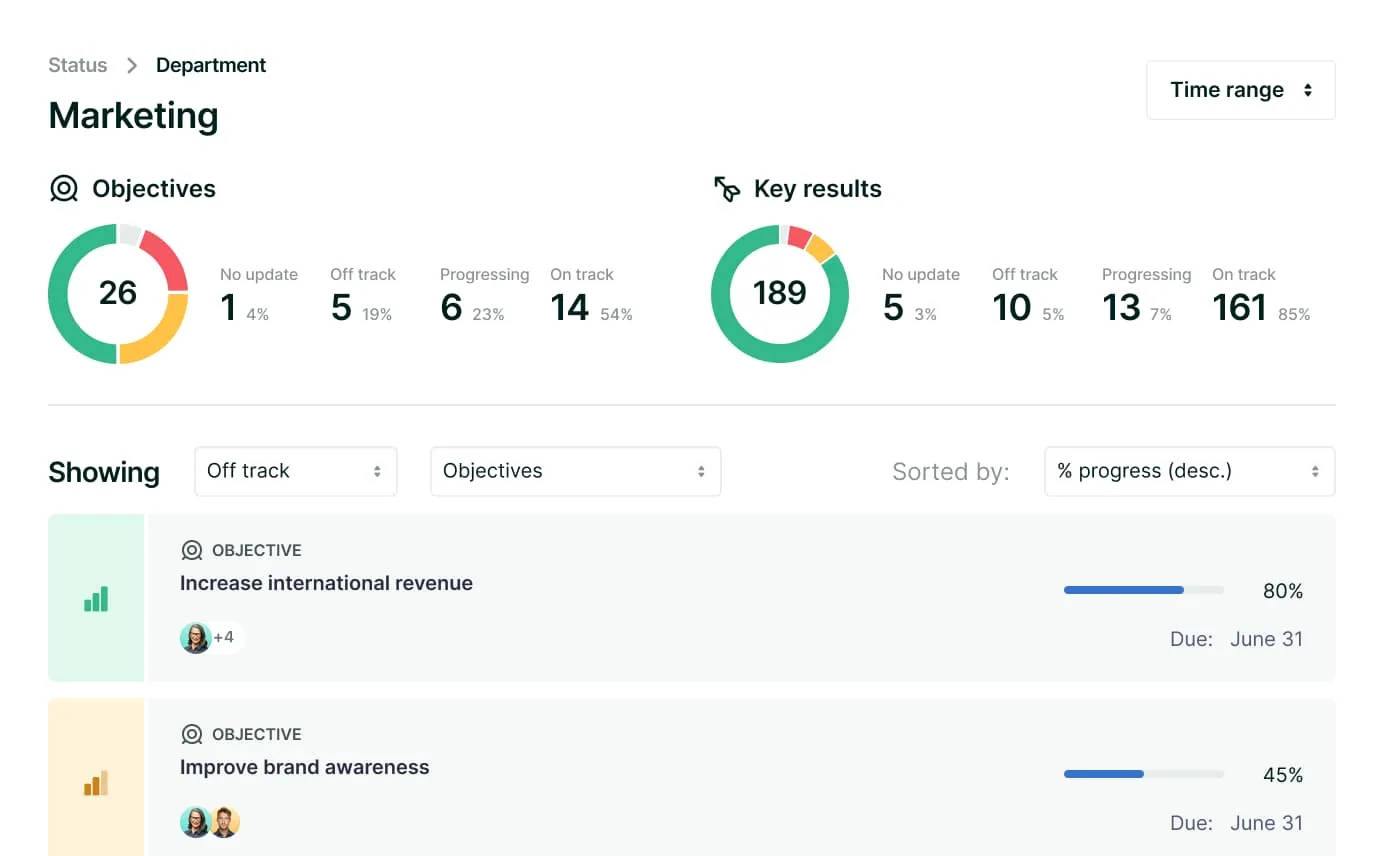
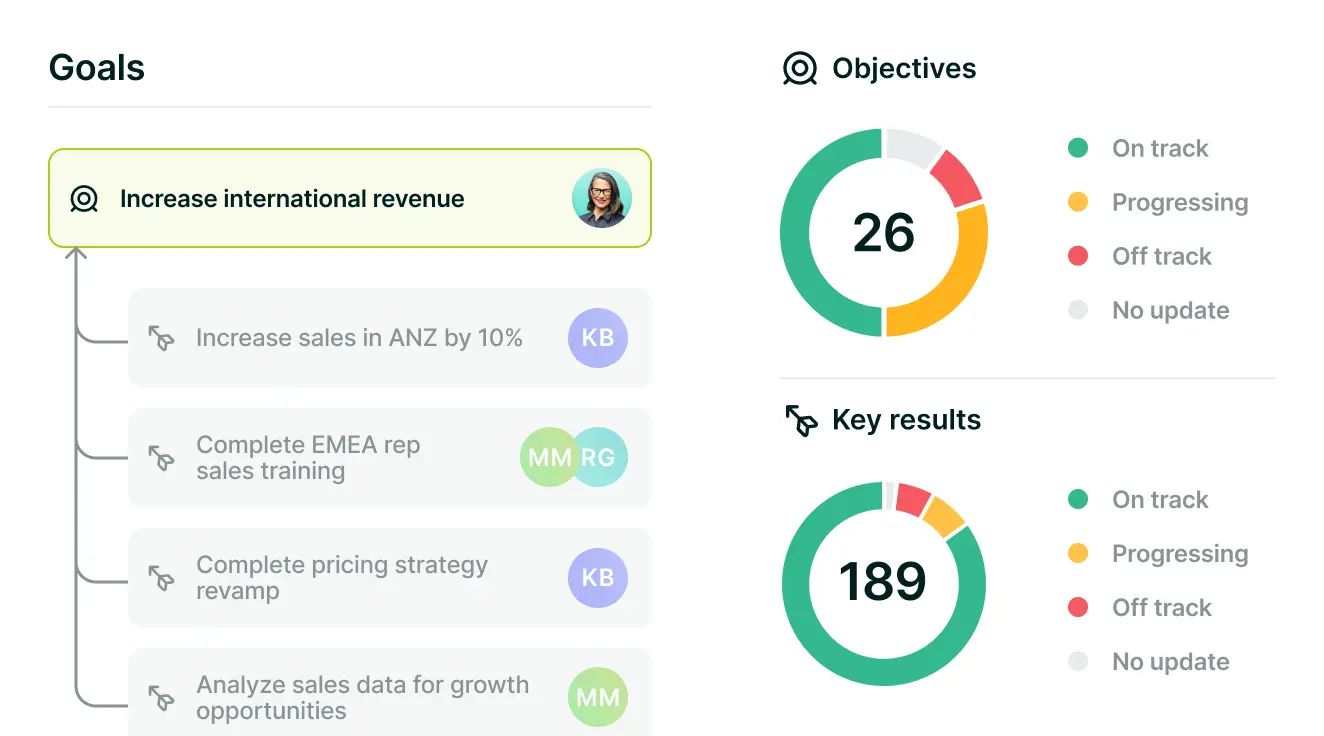
Lattice Goals & OKRs Feature Deep Dive
Integrated Performance Management & Goal Tracking: The goals module seamlessly connects with Lattice's performance management system, automatically incorporating goal progress into performance reviews and one-on-one meetings. This integration eliminates silos between goal-setting and performance evaluation, creating a unified approach to employee development and accountability.
Enhanced Productivity Through Strategic Alignment: By providing clear visibility into how individual efforts contribute to company objectives, the platform drives workforce productivity and accountability. Employees gain meaningful context for their work, while managers can better guide team performance toward strategic outcomes.
Considerations for Goal Hierarchy Visualization: While Lattice excels at goal connectivity and tracking, some organizations may find the hierarchical goal visualization less intuitive than expected. Companies requiring detailed visual goal cascading and organizational alignment trees should evaluate whether Lattice's current visualization capabilities meet their specific transparency and communication needs.
Employee Engagement
Lattice delivers an all-in-one employee engagement solution featuring advanced survey tools, pulse checks, and Employee Net Promoter Score (eNPS) measurement capabilities. The platform captures real-time employee sentiment data to help organizations understand workforce satisfaction and company culture health.


Industry-Leading Benchmarking & Data Insights: What sets Lattice apart is its extensive benchmarking database, powered by Lattice and Mercer data across hundreds of industries, regions, and company sizes. HR teams gain valuable context by comparing their engagement scores against relevant peer organizations, enabling data-driven decisions and strategic workforce planning.
AI-Powered Survey Analysis & Automation: Lattice AI transforms how organizations process employee feedback by automatically analyzing survey results and open-ended responses immediately after survey completion. The intelligent system identifies key engagement drivers, analyzes comment patterns, and provides research-backed action recommendations—saving HR teams over 30 hours per survey cycle.
Strategic HR Transformation Through Automation: This AI-driven approach revolutionizes the HR function by eliminating time-consuming manual analysis tasks. HR professionals can shift from reactive administrative work to proactive strategic initiatives, focusing on implementing meaningful action plans that improve employee experience and drive organizational success.
Career Development (Lattice Grow)
Lattice Grow puts career development directly in employees' hands with tools that make professional growth feel achievable rather than overwhelming. The module offers personalized development plans, clear career pathway mapping, and skill progression tracking—all designed to help people see exactly how to advance within their organization.

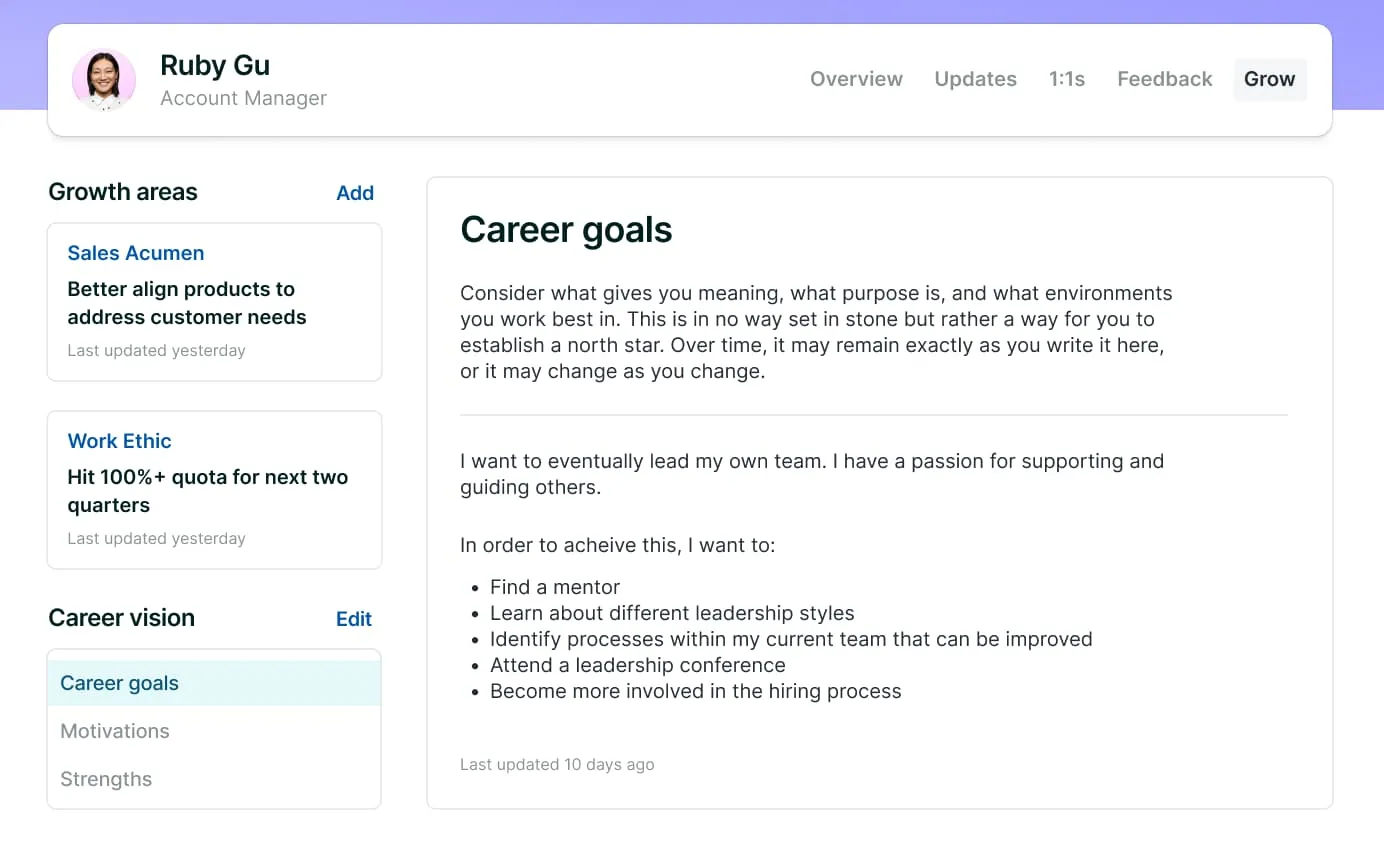
Lattice Grow Feature
Development Plans Built from Real Performance Data: What sets Lattice Grow apart is how it uses existing performance information to create meaningful development plans. With one click, the system pulls from past reviews, manager feedback, and stated career goals to generate actionable growth roadmaps. No more starting from scratch or wondering what skills actually matter for advancement.
Making Career Growth an Ongoing Conversation: Instead of treating development as an annual checkbox exercise, Lattice Grow integrates naturally with ongoing performance discussions. Employees can track skill development over time, managers can provide targeted coaching, and everyone stays aligned on career progression goals.
Compensation
Lattice's compensation module takes the guesswork out of pay decisions by connecting compensation directly to performance data. The platform provides cycle management tools, compensation analytics, and market benchmarking capabilities that help organizations build fair, competitive pay strategies based on actual performance metrics rather than subjective decisions.

Lattice Compensation Feature
Transparent Pay Decisions Through Performance Integration: What makes Lattice's approach valuable is how seamlessly it integrates with their performance management system. Instead of treating compensation as a separate process, pay adjustments flow naturally from documented performance data. This integration creates transparency for both managers and employees—everyone understands how performance translates to compensation changes.
Market-Informed Compensation Planning: The benchmarking features help HR teams understand where their pay scales stand relative to market rates, ensuring competitive positioning while maintaining internal equity. Organizations can make data-driven compensation decisions that support both employee retention and budget planning.
AI Integration
Lattice has invested heavily in AI across its modules. Lattice has woven artificial intelligence throughout their platform in ways that solve real problems HR teams face every day. AI is built into core functions to eliminate time-consuming tasks and surface insights that would otherwise get buried in data.

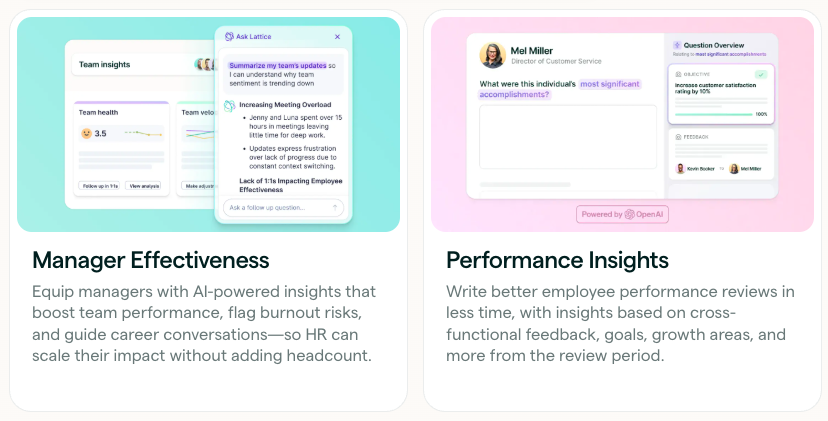
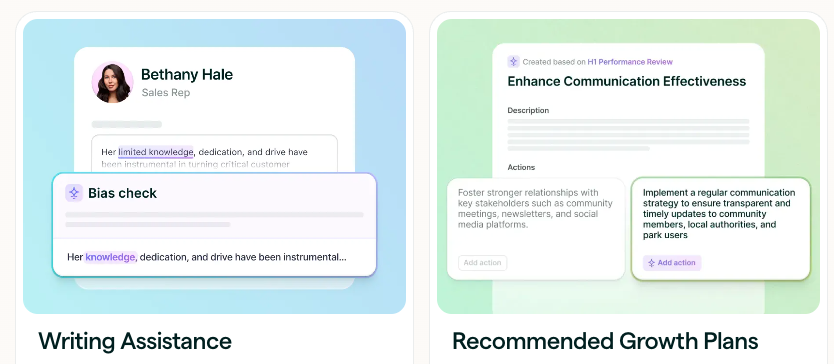
Lattice AI Features
AI Tools That Improve Real Work - The Writing Assist: The Writing Assist feature helps managers write better performance reviews by catching unclear language, grammar issues, and potential bias in real-time. Beyond writing support, Lattice AI generates personalized coaching recommendations, creates meeting agendas, and automatically summarizes performance data and employee feedback, turning hours of manual work into minutes of review time.
From Administrative Burden to Strategic Focus: Here's where Lattice AI makes a meaningful difference: it can analyze thousands of employee comments and surface key themes in seconds, work that would normally take HR teams days to complete manually. This isn't just about efficiency, it's about fundamentally changing what HR professionals spend their time doing.
Empowering People-Focused Leadership: By handling the data heavy lifting, Lattice's AI frees up managers and HR teams to focus on what humans do best: meaningful coaching conversations, strategic planning, and building stronger workplace cultures. The technology handles the analysis and summarization, so people can focus on action and relationship-building.This approach positions Lattice as more than just another HR platform—it's designed to evolve how organizations think about people management in an AI-enabled workplace.
Conclusion & Recommendations
Lattice is a best-in-class people management platform, particularly strong in performance management, goal alignment, and engagement. While it lacks full HRIS functionality, its AI-driven insights and intuitive design make it an excellent investment for organizations prioritizing people's success.Companies should view Lattice's HRIS as an excellent foundation for talent management rather than a replacement for full-featured HR systems. If an organization's priority is performance management with basic HR data support, Lattice fits perfectly. Organizations needing comprehensive HRIS functionality might consider Lattice alongside dedicated payroll and benefits platforms, or evaluate more traditional all-in-one HRIS solutions.
For HR leaders: Use Lattice to increase adoption of performance and feedback processes and shift HR’s role toward strategic impact.
For CFOs/Operations: Consider ROI not just in engagement, but also efficiency gains from AI-driven automation.
For decision-makers: Assess whether your organization needs a full HRIS. If yes, pair Lattice with another system; if not, it can serve as a best-in-class talent platform.



.svg)

